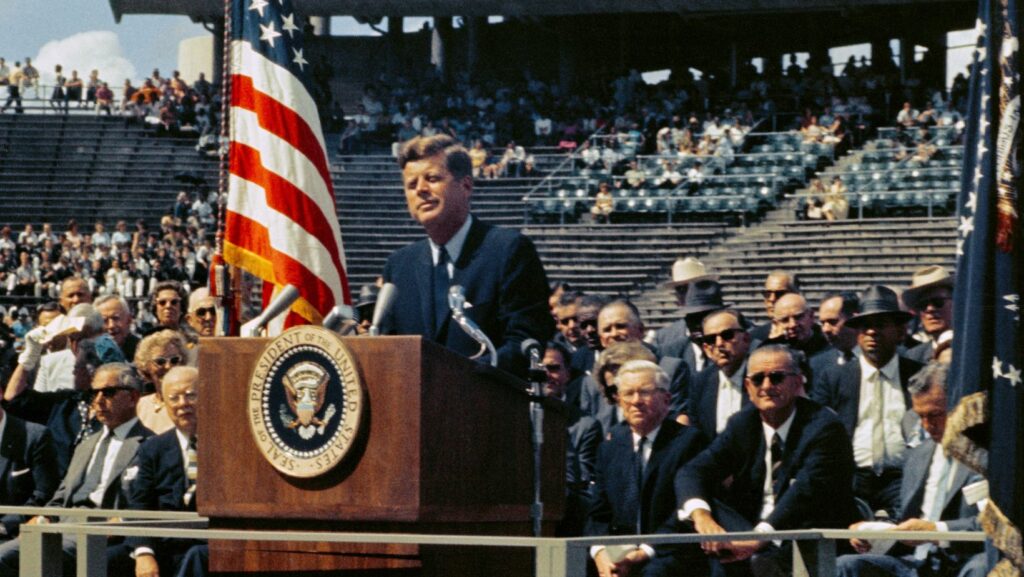
A Challenge That Modern Presidents Face Is Balancing Power And Public Opinion
One challenge that modern presidents face is the ever-evolving landscape of technology. With advancements in communication and social media, presidents are expected to navigate these platforms effectively while maintaining a sense of authenticity and connection with the public. It’s crucial for them to stay up-to-date with emerging technologies and adapt their strategies accordingly.
Another significant challenge is the constant scrutiny from the media and the general public. In today’s digital age, every action, statement, or decision made by a president can be instantly shared, analyzed, and criticized on various online platforms. This heightened level of visibility adds pressure to make well-informed choices and maintain a positive image while balancing competing interests.
A Challenge That Modern Presidents Face is
Advancements in Communication Technology
In today’s fast-paced and interconnected world, one of the significant challenges faced by modern presidents is keeping up with the rapid advancements in communication technology. The evolution of technology has revolutionized the way leaders communicate with their constituents, government officials, and even global audiences. From traditional methods like speeches and press conferences to social media platforms and live streaming, presidents must adapt to these new channels to effectively convey their messages.
With the rise of smartphones, social media apps, and instant messaging platforms, presidents are now expected to be accessible at all times. This presents a unique challenge as they strive to strike a balance between being transparent and maintaining security protocols. Additionally, the sheer volume of information available through these mediums can make it difficult for presidents to filter through noise and focus on important matters.
The Impact of Social Media on Presidential Campaigns
Another challenge that modern presidents face is harnessing the power of social media while navigating its potential pitfalls during election campaigns. Social media has become an influential tool for politicians seeking connection with voters directly. It allows presidential candidates to reach millions of people instantly, break news without traditional media intermediaries, engage in real-time conversations, and mobilize supporters more efficiently.
However, social media also poses risks as misinformation spreads rapidly across these platforms. Presidents must carefully manage their online presence to ensure accuracy and accountability while combating false narratives or malicious intent. Balancing authenticity with strategic messaging becomes crucial in order to maintain credibility with both supporters and skeptics.

Tackling Climate Change and Environmental Issues
Climate change and environmental issues have become pressing challenges for modern presidents. As the global climate continues to change at an alarming rate, it is crucial for leaders to take action and implement effective strategies to mitigate these problems. In this section, I’ll discuss some of the key initiatives that can be undertaken to address climate change and environmental concerns.
- Transitioning to Renewable Energy Sources: One of the most significant steps in combating climate change is shifting away from fossil fuels and embracing renewable energy sources. Investing in solar, wind, hydroelectric, and geothermal power can help reduce greenhouse gas emissions while simultaneously promoting sustainable development.
- Implementing Sustainable Policies: Adopting environmentally friendly policies is essential for creating a greener future. This can include regulations on carbon emissions, promoting energy-efficient practices in industries, encouraging sustainable agriculture methods, protecting biodiversity through conservation efforts, and supporting eco-friendly transportation systems.
- Strengthening International Cooperation: Addressing global environmental challenges requires collaboration among nations. Engaging in international agreements such as the Paris Agreement allows countries to work together towards common goals like reducing emissions and adapting to climate impacts. By fostering cooperation on a global scale, we can maximize our collective efforts in combating climate change.
- Promoting Conservation Efforts: Preserving natural habitats and protecting endangered species are crucial aspects of tackling environmental issues. Establishing protected areas, implementing wildlife conservation programs, promoting sustainable forestry practices, and supporting research on biodiversity are all vital steps towards safeguarding our ecosystems for future generations.
- Educating and Raising Awareness: Education plays a pivotal role in addressing climate change and environmental issues effectively. Presidents should prioritize raising awareness among citizens about the importance of sustainable living practices, waste reduction strategies, recycling initiatives, water conservation techniques, and overall responsible consumption patterns.
By prioritizing these initiatives alongside other innovative approaches tailored to each country’s specific circumstances, modern presidents can make significant progress in tackling climate change and environmental issues. It is imperative that leaders recognize the urgent need for action and work diligently towards a sustainable future for our planet.
In conclusion, modern presidents face a myriad of challenges in navigating advancements in communication technology, harnessing social media’s impact on campaigns, and effectively utilizing data analytics for decision making. Adaptability and strategic foresight are key attributes necessary for leaders to tackle these challenges head-on while maintaining transparency, credibility, and effective governance.





